What Is A Sports Massage?
Whether you’re a professional athlete or are completely new to the fitness world, you may have come across sports massage therapy. But you may be wondering, what is a sports massage exactly?
In this article, we’ll answer this question and more! We’ll cover everything you need to know about sports massage therapy, including:
- What Is Sports Massage: Definition
- What Is A Sports Massage Good For?
- Benefits Of Sports Massage
- Who Needs Sports Massage Therapy?
- The Different Types Of Sports Massage
- Other Effects Of Sports Massage
Before we get started, why not turn your interest in sports massage into a lucrative career with OriGym’s Level 3 Sports Massage Therapy qualification? Enquire today or download our free prospectus here to browse the full range of fitness courses we offer.
How to Start Your Own Sports Massage Therapy Business!
Download our FREE guide and save 15% off your Level 3 SMT course!
What Is Sports Massage: Definition
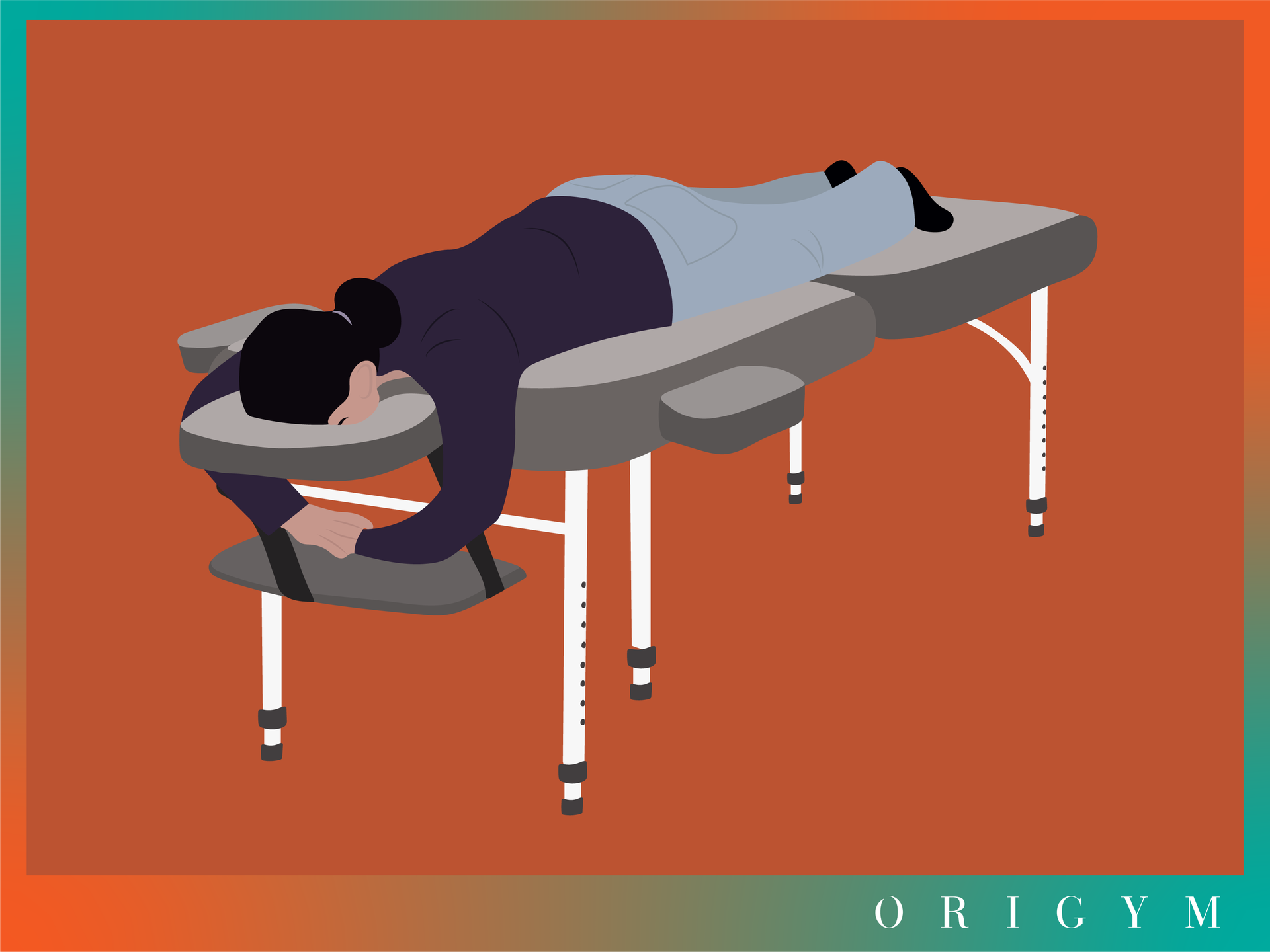
So, sports massage - what is it?
Sports massage therapy is a deep form of massage, which involves the mobilisation and manipulation of soft tissue.
Soft tissue is defined as any connective tissue that hasn’t hardened into bone or cartilage. This includes:
- Muscles
- Tendons
- Ligaments
- Skin
- Fascia (a form of connective tissue that lines other soft tissues)
Generally, a sports massage is used to relax the musculoskeletal system, which helps to warm-up the muscles prior to any form of physical activity. Both of these actions help to prevent injury during exercise.
Sports massage therapy can also be used for recovery and rehabilitation of soft tissue injury, which has been caused through strenuous physical activity and injury. We will elaborate further on this in the next section, when we answer, ‘what is the purpose of a sports massage?’
If you’re wondering ‘what is a sports massage therapist?’, it is simply someone who carries out a sports massage, as well as giving advice and guidance on how someone can prevent injuries from occurring themselves.
Want to become a sports massage therapist yourself? Check out our article on how to become a sports massage therapist for a step-by-step guide for getting into one of the most lucrative SMT careers in fitness!
What Is A Sports Massgae Good For?
The answer to the question, ‘what is sports massage good for?’ depends on whether you are training specifically for an event or as part of a more general training programme.
We will explore each of these instances below!
Pre-Event Sports Massage Therapy: What is it & What’s it Good For?
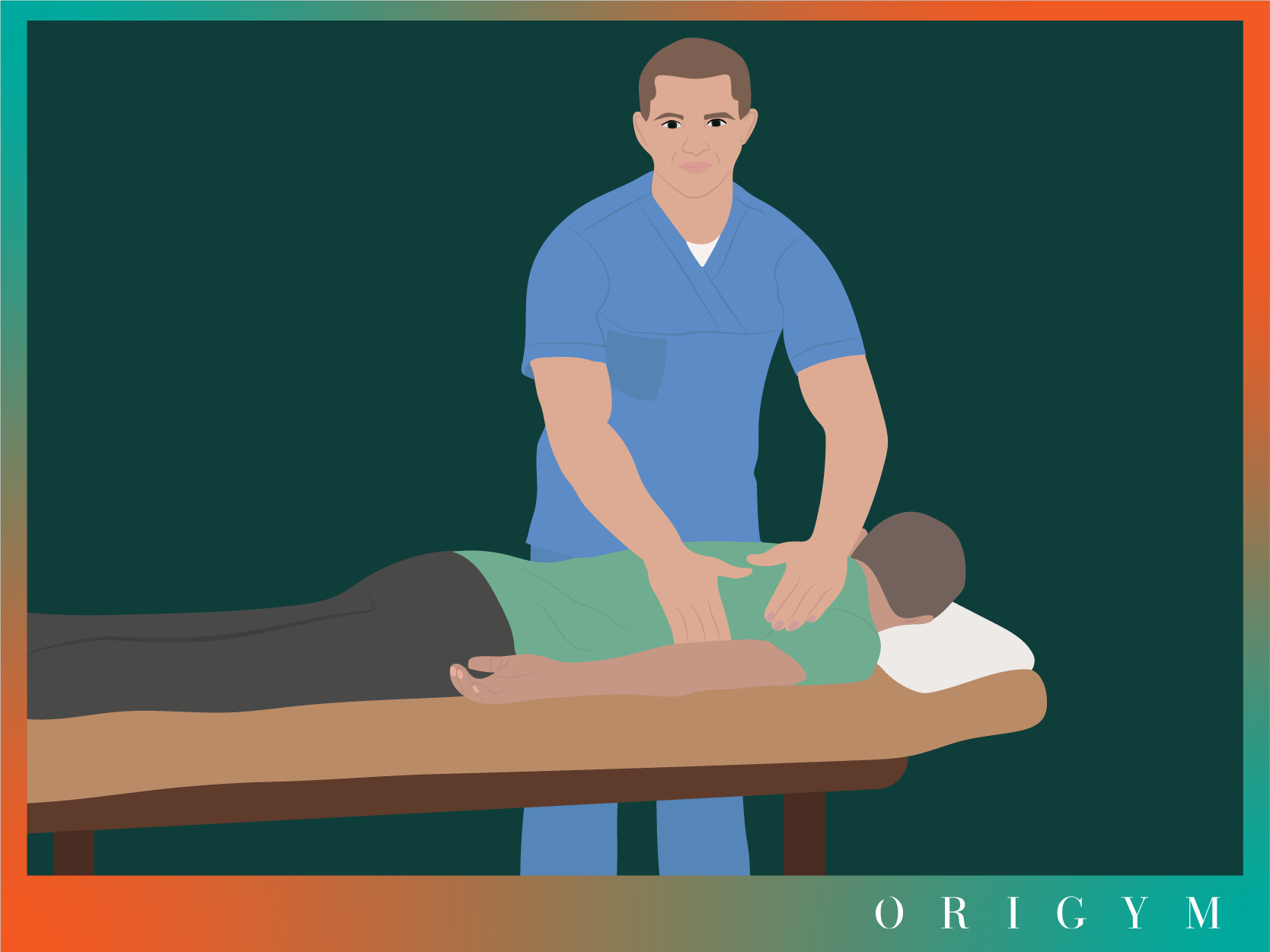
One of the most common things that a sports massage is good for is a pre-event sports massage.
But what is pre-event sports massage?
A pre-event sports massage is simply a sports massage given directly before an event, or in the weeks leading up to it.
The main benefit of a pre-event sports massage is that they help to warm up the muscles prior to exercise, by boosting blood flow and increasing circulation.
It also helps to increase tissue elasticity, meaning that muscles are more relaxed and you are less likely to sustain an injury during the event.
As well as the physical elements of what sports massage is good for, it also assists athletes with mental preparation.
Going into an event with relaxed, stretched out muscles and knowing that you’re less likely to sustain an injury can help you feel more relaxed and ready to perform at your best!
Post-Event Sports Massage: What is it & What’s it Good For?
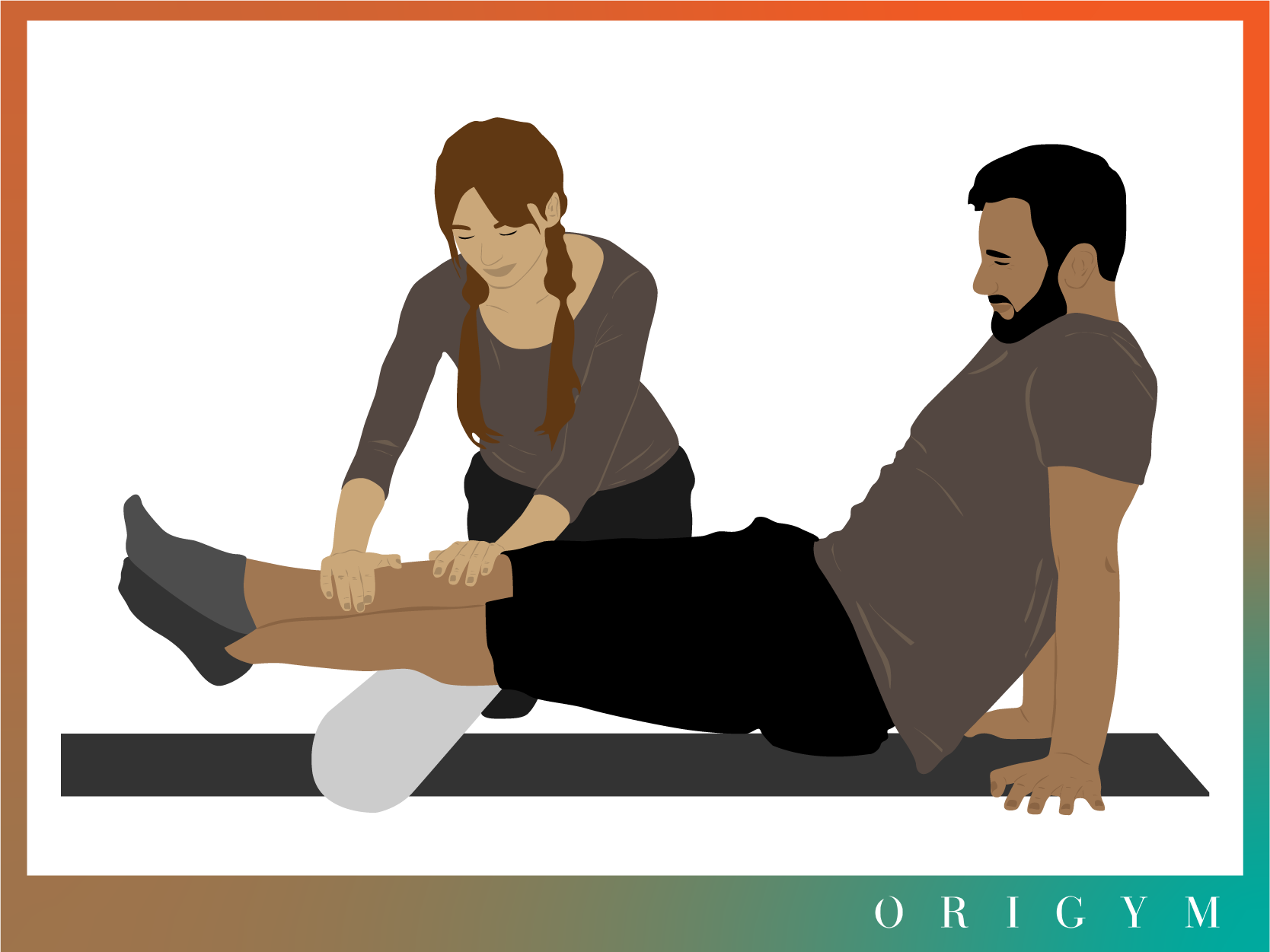
Whether you’ve played a football match, or just completed a marathon, post-event sports massages are always a sensible idea.
This can be done either straight afterwards, or up to 3 days after the event.
A post-event sports massage works by:
- Reducing delayed-onset muscle soreness (DOMS)
- Reducing muscle spasms
- Removing any metabolic build-up of waste products that may have occurred during exercise
- Encouraging faster muscle recovery
All of these things can help you prevent injuries, and help prepare the body for future exercise. This means that you can return to training much more quickly!
The Benefits of Sports Massage as Part of a General Training Programme

When thinking about ‘what is sports therapy massage?’, you may not have thought about the possibility of including sports massage as part of a regular training programme.
You may also be wondering what a sports massage is good for if you’re not a professional athlete.
But in fact, anyone who exercises in any form can benefit from a sports massage!
Regular sports massage can be beneficial as part of a normal training programme, and can be created by a therapist based on your individual requirements.
For instance, you may choose for the massage to be concentrated on specific muscle groups, to maintain or improve your range of movement and flexibility. It can also assist with recovery, and help to facilitate the growth and re-building phase of your training.
This means that you’ll perform better during your programme, whether you’re a professional athlete, or an amateur wanting to make the next step in your career!
Getting regular massages as part of a programme can also act as a preventive measure, as therapists can target any areas that are likely to cause injuries whilst you are training.
Benefits Of Sports Massage
Now you know what the purpose of a sports massage is and the different things that it can be good for, let’s dive a little deeper into some of the great benefits they can bring!
#1 - Sports Massage Therapy Can Reduce DOMS

DOMS, or delayed-onset muscle soreness, can be caused by a number of factors during high-intensity exercise, including:
- Muscle or connective tissue damage, caused by microscopic tears in the muscle fibres.
- Muscle spasm, that reduces blood flow
- A build-up of waste products in the muscles
As we have mentioned, getting a sports massage can help prevent or reduce the intensity of DOMS.
For example, targeted sports massage helps to improve lymphatic flow and blood circulation within the body. Increased blood flow enables more oxygen and nutrients to be delivered to an area, which assists the repair of damaged tissues.
Plus, sports massages can prevent DOMS as the action increases the temperature of soft tissues, which allows them to relax.
As the muscle relaxes, muscle fibres are loosened, and a greater range of movement is available. Having relaxed muscles before exercising therefore helps to prevent tightness building up both during, and after exercise.
Begin a Career in Sports Massage Therapy Get qualified with OriGym's Level 3 Sports Massage Therapy course and begin an exciting career today!
#2 - Sports Massage Therapy Can Relieve Tight Muscles

Another benefit of having frequent sports massages is that they can help to relieve tight muscles.
Knots that form within the muscle as a result of tightness can limit your flexibility, which increases pain and leads to a higher risk of future injury.
A sports therapy massage is good for increasing blood flow through tight muscles, which helps to stretch the muscle fibres and break down knots and inflexible tissues.
Even athletes in their off-seasons can benefit from sports massages, as they help to decrease tightness and tension in muscles that have been over-stressed during the season.
Having sports massages regularly can therefore help to improve flexibility, reduce your chance of sustaining an injury. This will then all help to maximise your sporting performance!
#3 - Sports Massage Therapy Can Reduce Pain
Alongside helping to relieve tightness, sports therapy massage is good for controlling and managing pain.
Firstly, sports massages relieve pain by interrupting the body’s pain signals. These are impulses that run up the spinal cord to the brain.
Sports massages also allow the body to release natural pain killers. These are morphine-like substances, which the body makes and releases in order to override painful sensations.
As we have said, sports massage helps to relieve muscle tightness- and this also contributes to reducing pain.
#4 - Regular Sports Massages Can Improve Sporting Performance

As we have discussed, you don’t have to be experiencing any pain or difficulty to participate in sports massage. In fact, regularly scheduled maintenance massages can be highly beneficial for athletic performance!
We’ve already established that sports massage therapy can reduce pain, DOMS, and muscle tightness. All of these things therefore mean that athletes can train more frequently, leading to a higher level of performance.
That’s why for many professional athletes, having a sports massage therapist is just as important for their career as other members of their team such as a strength and conditioning coach.
Sports massage therapists are also trained to be able to create customised treatment plans based upon their client’s specific needs, injuries, and challenges.
They can therefore identify and treat specific weaknesses before they develop into injury, which can drastically improve athletic performance.
Furthermore, as well as helping us to relax, sports massages have also been proven to help improve and stabilise mood. This in turn can impact how effectively athletes perform during physical activity, including observation and decision-making skills.
Start a Career in Sports Massage Therapy
- Learn online & in-person with a dedicated tutor
- Qualify in as little as 8 weeks
- Ofqual-regulated training
#5 - Sports Massage Can Help You Relax

It may sound obvious, but an often overlooked answer to the question, ‘what is a sports massage good for?’, is that it can help you relax!
By this, we mean that it can help you relax both physically and mentally. As well as having strong physical performance, an equally important aspect of fitness is the ability to relax and switch off. And a sports massage can help you do just that!
The action of a sports massage generates heat throughout the muscles, which eases tension and allows them to relax. This is great for those who may be prone to overuse injuries, as the muscles are given a chance to relax and recover before exercising again.
As we know, the removal of waste products in the muscles, encouraged by sports massages, helps to relieve DOMS, pain, and tightness- all of which can make it difficult to relax.
Not only do sports massages help to relax the muscles, but its motion helps to soothe the nervous system and brain too- particularly if your therapist uses a good massage oil to help you relax.
This is what contributes to the overall relaxed feeling that you will experience after a sports massage.
#6 - Sports Massage Can Help You Sleep Better

When wondering, ‘what is sports massage good for?’, you may not have thought about its benefits for your sleep. But in fact, this is a huge benefit of getting a sports massage.
Sleep is an often overlooked, but very important element of recovery. As well as giving you more energy for physical activity, getting a good night's sleep is also essential for muscle recovery, as it is during sleep that your muscles have time to repair and relax.
In fact, improved sleep is one of the best mental health benefits of exercise!
By relieving pain and discomfort in the muscles, sports massage promotes relaxation. This in turn will help you sleep better!
- - - -
Enjoying this article so far? Here’s 3 more that we think you’ll love:
- Advantages Of Being A Sports Massage Therapist
- Become a Sports Massage Therapist
- Sports Massage Therapist Job Description Explained
Who Needs Sports Massage Therapy?
Now that we’ve covered the benefits of sports massage, let’s now take a look at the different benefits for different types of people, from beginners to professional athletes and more!
Sports Massage is Good for Fitness Beginners

You don’t have to be an athlete to reap the benefits of sports massage!
Whether you’re exercising just once a week or every day, it is important to always manage the impact of pushing your body through any form of physical exercise. In other words, even as a beginner, you should make sure that you take the appropriate measures to help you recover.
If you fail to do this, particularly as a beginner, you are likely to suffer from things such as DOMS and muscle tightness. This could then make you more likely to sustain an injury as a result of overtraining without sufficient recovery.
For beginners, sports massage is good for reducing the risk of overtraining, since it helps to relax the muscles. In the long term, it can also help improve your flexibility.
All of these factors mean that sports massage can make you less likely to sustain an injury when starting out with fitness.
Sports Massage Can Help Those With Injuries

As we have mentioned, people suffering from an injury or pain that is specific to one part of the body can experience the benefits of a sports massage.
If you're looking for one of the positive effects of sports massages, you'll be glad to learn that if you are suffering from an injury, getting a sports massage can help with recovery.
Some common injuries that sports massage can help treat are:
- Runner’s knee
- Plantar fasciitis
- Tennis elbow
- Tight hamstrings
- Neck pain
- Back pain
Whatever your injury is, a qualified sports massage therapist should be able to use specific sports massage therapy techniques to treat it.
How to Start Your Own Sports Massage Therapy Business!
Download our FREE guide and save 15% off your Level 3 SMT course!
Sports Massage is Good for Professional Athletes

Sports massage is most commonly used to aid the preparation, recovery, and rehabilitation of professional athletes.
This is because sports massage can help athletes avoid permanent damage or injury that can develop due to muscle tightness. If left unaddressed, these injuries can prevent athletes from reaching goals, negatively affecting their career progression.
Whether a professional athlete is already injured or not, getting a sports massage is beneficial. Sports massage therapists are qualified to identify any abnormalities in the muscle tissues, and pre-empt injuries before they become an issue.
As we have discussed, professional athletes can benefit from sports massages before or after an event, as well as making it part of a regular training routine.
Sports Massage Benefits Amateur Athletes
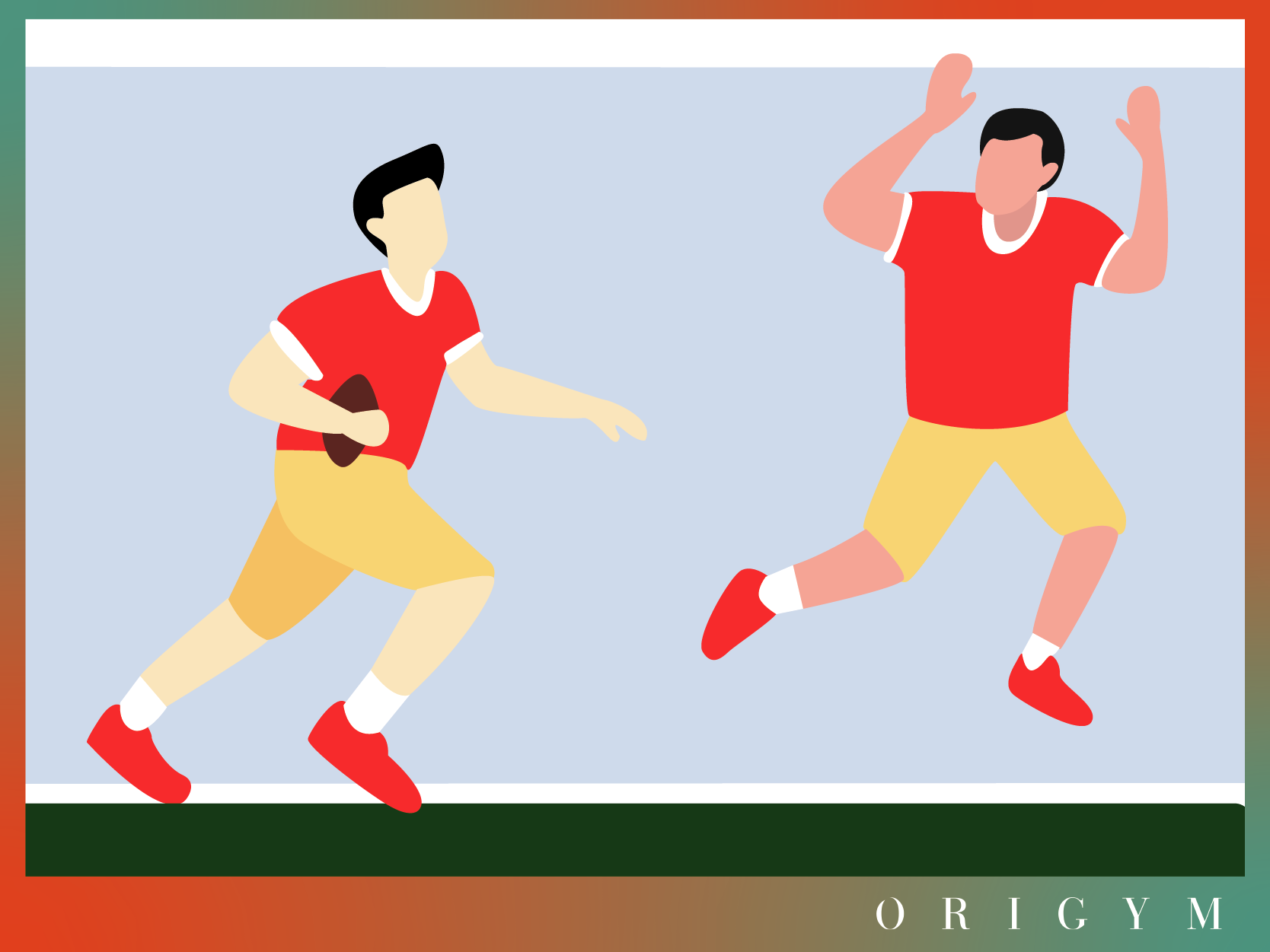
As well as professional athletes, sports massage therapy is also benefitical for ametaur athletes.
By ‘ameteur’, we mean those who compete in a sport as a personal interest or hobby, rather than as a career for monetary gain.
For example, if you play football for a local 5-a-side team, or are a member of a tennis club, you can call yourself an ametaur athlete.
They may not be competing at as high a level, but ameteur athletes are just as likely to sustain injuries during sport as professional athletes. In fact, they may even be more likely to get an injury!
But as amateur athletes, they are less likely to have access to the same resources as professionals. For example, a professional athlete will likely have a team of medical professionals, including a sports massage therapist.
So when wondering, ‘what is a sports massage therapist?’, remember that they don’t always work with professionals!
It’s therefore important for anyone participating in physical activity, even at an ameteur level, to dedicate time to sports massage. The only difference is that an ameteur athlete will have to seek out a sports massage therapist themselves.
Plus, since sports massage can help to improve sporting performance, getting a good sports massage may even give amateur athletes the boost that they need to progress to a professional level!
The Different Types Of Sports Massage
So, we have explained what a sports massage is in general and who can benefit from them. But in fact, there are many different types of sports massage, depending on the type of client and what is being treated. We will explain them all below!
What is Effleurage?

The first stage of most sports massage is called Effleurage. This is the lightest massage technique.
Meaning ‘to flow’ or ‘to guide’, Effleurage involves light touching with a regular rhythm, and is often used as an introduction to sports massage.
Its main purpose is to allow the therapist to gauge an idea of the condition of the muscles and surrounding tissues.
Effleurage also has a calming, relaxing effect on both the muscles and the temperament of the patient, meaning that they feel settled and ready to undergo some of the rougher techniques.
As a gentler technique, Effleurage can also be used as a rest period, and often links together each of the other sports massage techniques.
Start a Career in Sports Massage Therapy
- Learn online & in-person with a dedicated tutor
- Qualify in as little as 8 weeks
- Ofqual-regulated training
What is Petrissage?
Petrissage means ‘to knead’, and as the name suggests, is a deeper massage technique than Effleurage.
When wondering ‘what is a sports therapy massage?’, the technique that most likely springs to mind is Petrissage. It consists of manipulating the tissue, from lifting, to squeezing, and moving tissues.
The pressure exerted during Petrissage increases blood flow, allowing waste products to be removed more quickly, and oxygen and nutrients to be delivered to replenish the muscles.
There are a few different forms of Petrissage, including:
- Kneading- The soft tissues in the muscles, skin, and the bones underneath are moved against one another.
- Picking- One hand is used to move, squeeze, and lift tissues, whilst the other hand supports the corresponding limb, to hold it in place.
- Wringing- As the hands move up and down, tissues are lifted from the bone and pushed side to side.
- Rolling- Using the fingertips and thumbs, the therapist gently grips the skin and rolls it. This targets the subcutaneous layer, which is the deepest layer of skin.
- Pressures- The therapist places pressure, or compression, on the soft tissues until they reach a natural stop. They hold for a few seconds, then release the area.
What is Tapotement?
Although sports massage relaxes the muscles, it is also designed to manipulate tissues and aid recovery.
This means that a sports massage therapist is trained to progress from Effleurage, to rougher massage techniques, such as Tapotement.
Tapotement techniques aim to further increase blood circulation, stimulate the contraction of muscle fibres, soften areas of hard tissue, and increase tone.
There are several different Tapotement techniques, such as:
- Hacking- With palms facing each other, the hands rapidly strike muscle tissues in a light, springy, chopping motion.
- Cupping- By forming an arch with the fingers, the hands are brought together in a cup shape. Then, creating a vacuum, they alternatively strike the skin.
- Beating- Using loosely clenched fists, the heel of the hands, and the mid-section of the fingers, larger areas, such as the thighs or glutes, are alternatively struck.
- Pounding- This is a similar technique to beating, but the fists are instead turned inward and are circled over each other as they strike the target area.
What is Friction?
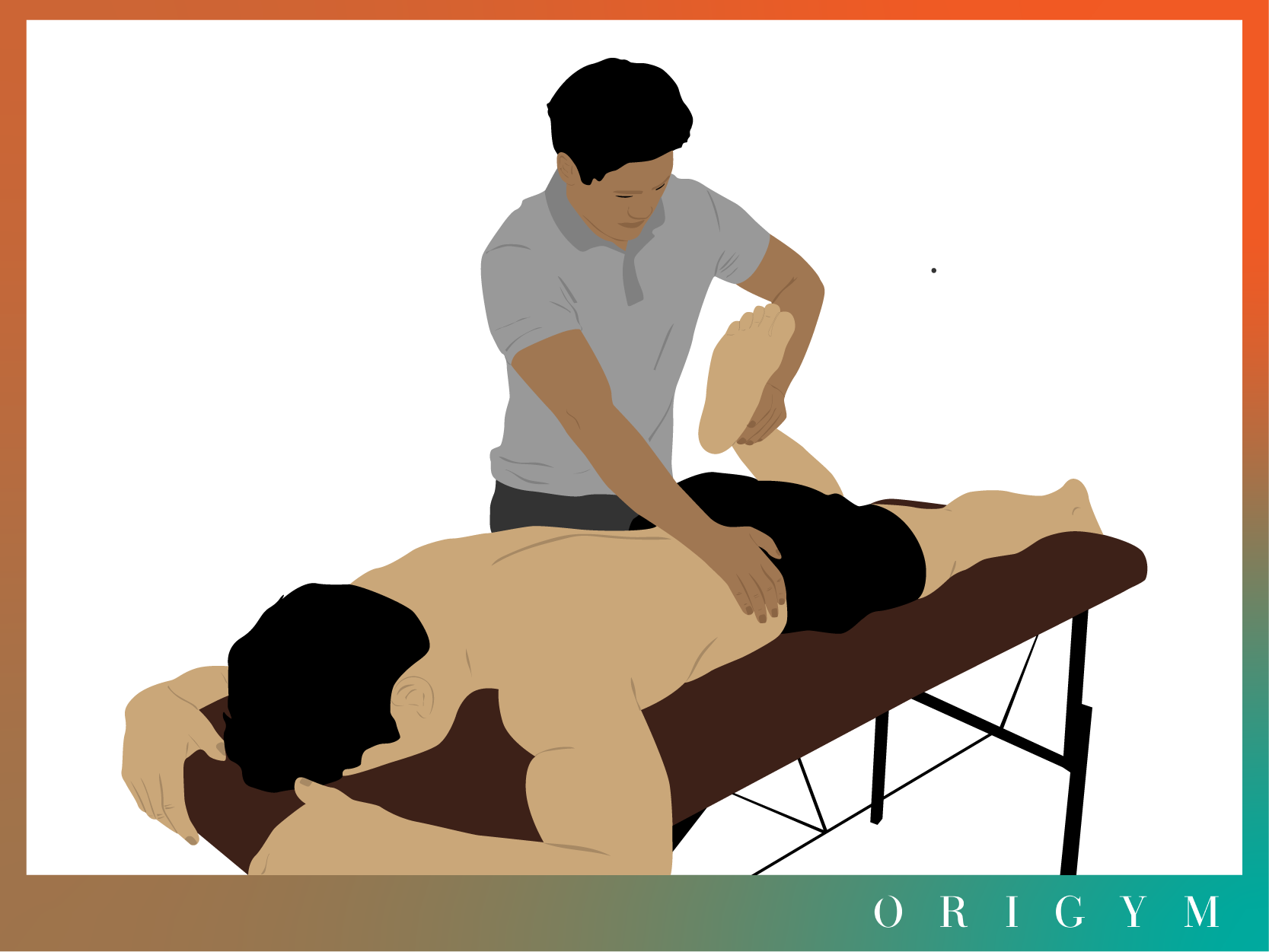
Whereas Tapotement techniques generally focus on larger areas, Friction is a more specific, advanced technique that focuses on small areas at a time.
Using only the fingers and thumbs, friction is performed forwards and backwards across muscle fibres.
As a rough technique, this can cause discomfort and bruising for up to 48 hours post-massage. Therapists should therefore use Effleurage at regular intervals, to give theirs and their client’s joints a break from such an intense treatment.
It may be an intense technique, but it's also extremely effective at removing adhesions and scarring, improving circulation, and increasing range of motion. After all, that is what the purpose of a sports massage is!
Begin a Career in Sports Massage Therapy Get qualified with OriGym's Level 3 Sports Massage Therapy course and begin an exciting career today!
What is Vibration & Shaking?
The final sports massage technique is vibration and shaking, which can be used to either relax or activate the muscles.
If you’re an athlete wondering what pre-event sports massage is like, then you’re most likely to encounter these techniques, as they’re used to improve circulation and relieve muscle tightness before physical activity.
During vibration, either light or speedy strokes can be used.
Lighter strokes activate the parasympathetic nervous system, which controls the ‘rest and digest response.’ This therefore releases tension and helps the muscles to relax.
Speedy strokes activate the circulatory system, and instead of muscles, the soft tissues are relaxed.
Progressing from light to more forceful shaking, the shaking technique consists of lifting and pulling motions.
Other Effects Of Sports Massage
As well as the benefits of sports massage that we have discussed, there are several other physiological effects of having a sports massage.
#1 - Sports Massage Increases Tissue Elasticity

When considering what a sports therapy massage is good for physiologically, one of the best advantages is its ability to improve the elasticity of muscle tissues.
This most commonly occurs when Petrissage techniques, such as wringing and rolling, are used. These techniques move the tissues transversely, which helps to stretch fascia compartments and muscle fibres.
Specifically, bundles of muscle fibres are separated and stretched during sports massage, as well as muscles being lifted and moved over supporting structures.
This increases the extensibility and elasticity of tissues which, in turn, increases muscle flexibility and allows them to reach their full range of motion during physical activity.
Having a greater range of motion can not only help improve performance during exercise, but it also reduces the chance of sustaining an injury.
#2 - Sports Massage Increases Body Temperature
Through the friction generated by the hands moving over the skin, heat is created within muscle tissues.
This is because these tissues rub against each other, dilating capillaries and vessels, and allowing warm blood to flow.
An increased temperature may sound like a negative side effect. However, it is actually one of the main benefits of sports massage.
This is because warmth increases the metabolic rate, which improves the condition and flexibility of muscle tissues, ligaments, tendons, muscle fibres, and fascia tissue.
Muscles that are warm contract more efficiently as you move, meaning that they are at a lower risk of strains and sprains. This is why pre-event sports massage is so effective!
#3 - Sports Massage Increases Lymphatic Drainage
During exercise, our bodies tend to build up waste products and toxins in the muscles, such as lactic and pyruvic acids.
This can make the muscles sore and stiff, which interferes with recovery and means that you have to wait longer to exercise again!
With this in mind, sports massages help to increase lymphatic drainage. This is the process whereby waste products are removed from the body through the lymph vessels, via lymph fluid.
As a result of excess fluid and metabolic waste build-up after exercise, you may find yourself experiencing swelling as your body fights to protect itself from further damage and infection.
Increased lymphatic drainage therefore helps to reduce this swelling, as well as any fatigue and weakness that you may be experiencing.
This improves the rate of recovery, allowing for more frequent training, helping you reach your goals quicker!
#4 - Sports Massage Increases Venous Return

Venous return is the rate of blood flow returning back to the heart. This rate is dependent on the pressure exerted by the contraction of the muscles upon the veins.
What a sports massage is good for is increasing the rate of venous return, which is done specifically through the Effleurage technique.
When deep Effleurage strokes are performed on the body in the direction of the heart, it helps to increase venous return by pushing blood through the veins.
This process helps to:
- Reduce Venostasis- This is when blood flows too slowly through the veins, which increases the risk of blood clots.
- Reduce Edema- This is swelling, that can be caused by the body’s reaction to injury, or medical conditions such as heart failure or kidney disease.
Start a Career in Sports Massage Therapy
- Learn online & in-person with a dedicated tutor
- Qualify in as little as 8 weeks
- Ofqual-regulated training
#5 - Sports Massage Aids Breakdown of Scar Tissue
Scar tissue forms as a result of past injury, and is part of the healing process within soft tissues and between damaged ones.
The inflexible tissue that it forms can interfere with the movement of muscles, ligaments, and tendons, as scar tissue has a lower level of elasticity compared to our normal muscular tissue.
An increase in scar tissue also leaves a higher risk of injury in that specific area.
In cases where scar tissue is affecting movement and the daily lives of clients negatively, what sports therapy massage is good at is improving the flexibility of scar tissue, or even breaking it down.
This is because deep massage techniques, such as Frictions, help to generate heat. Consequently, the scar tissue increases in temperature, which allows it to loosen and be broken down more easily.
However, whilst a sports massage can help the breakdown of scar tissue, if you are injured, remember the importance of rest days when it comes to injury recovery.
#6 - Having Sports Massages Breaks Adhesions Down
Adhesions are bands of scar tissue which are created in the body as part of the inflammatory healing process. They are formed in reaction to tissue disturbance caused by injury, trauma, surgery, or infection.
They are formed when tissues and organs become sticky and bind together, rather than shifting easily as the body moves.
Adhesions can affect:
- The bowel
- Female reproductive organs, such as the ovaries and fallopian tubes
- The heart
- Pelvis
- Spine
- Hand
They can also lead to complications, such as:
- Small bowel obstructions
- Chronic pelvic pain
- Infertility
If you’ve ever wondered what a sports massage is beneficial for besides being relaxing, then the answer is helping to prevent some of these complications.
This is because deep sports massage techniques, such as Friction, encourage tissue structures to become loose and free, which restores movement within muscle tissues.
This allows the muscles, ligaments, and tendons to function normally again.
#7 - Sports Massage Can Cause Tenderness

A sports massage shouldn't cause a lot of pain, but you may experience some tenderness as a result of receiving one.
Particularly if you are new to sports massage, you’re likely to experience tissues being manipulated that haven’t been touched before, especially when deeper techniques are being employed!
As a result, you may experience a pain which is similar to DOMS.
The most important thing to remember is that it is normal to experience some stiffness or tenderness in the muscles and connective tissues for 1 to 2 days after your massage. But just think of the long-term benefits you’ll get from making this a regular habit!
If the pain is more extreme, or persists for a longer period, then be sure to consult a sports massage therapist or doctor.
Before You Go!
Feeling inspired? Begin your journey to become a qualified sports massage therapist with our Level 3 Sports Massage Therapy Course.
You can check out the full range of courses we offer by downloading our course prospectus here.
How to Start Your Own Sports Massage Therapy Business!
Download our FREE guide and save 15% off your Level 3 SMT course!

